Irisin improves adiposity and exercise tolerance in a rat model of postmenopausal obesity through enhancing adipo-myocyte thermogenesis
- PMID: 35996069
- PMCID: PMC9684260
- DOI: 10.1007/s13105-022-00915-3
Irisin improves adiposity and exercise tolerance in a rat model of postmenopausal obesity through enhancing adipo-myocyte thermogenesis
Erratum in
-
Correction: Irisin improves adiposity and exercise tolerance in a rat model of postmenopausal obesity through enhancing adipo-myocyte thermogenesis.J Physiol Biochem. 2023 Aug;79(3):683. doi: 10.1007/s13105-023-00963-3. J Physiol Biochem. 2023. PMID: 37115495 Free PMC article. No abstract available.
Abstract
The prevalence of obesity and its associated metabolic disorders, along with their healthcare costs, is rising exponentially. Irisin, an adipomyokine, may serve as a critical cross-organ messenger, linking skeletal muscle with adipose tissue and the liver to integrate the energy homeostasis under diet-induced obesity. We aimed to explore the putative role of irisin in the protection against obesity in a postmenopausal rat model by modulating energy expenditure (EE). Bilateral ovariectomy (OVX) was performed. After 3 weeks of recovery, the OVX rats were classified according to their dietary protocol into rats maintained on normal diets (ND) (OVX) or high-fat diet (HFD) groups. The HFD-fed animals were equally divided into OVX/HFD, or irisin-treated OVX/HFD groups. Sham rats, maintained on ND, were selected as the control group. We evaluated anthropometric, EE, and molecular biomarkers of browning and thermogenesis in inguinal white adipose tissue and skeletal muscle, and the activity of the proteins related to mitochondrial long chain fatty acid transport, oxidation, and glycolysis. HFD of OVX further deteriorated the disturbed glucose homeostasis, lipid profile, and the reduced irisin, thermogenic parameters in adipose tissue and skeletal muscle, and EE. Irisin treatment improved the lipid profile and insulin resistance. That was associated with reduced hepatic gluconeogenic enzyme activities and restored hepatic glycogen content. Irisin reduced ectopic lipid infiltration. Irisin augmented EE by activating non-shivering thermogenesis in muscle and adipose tissues and decreasing metabolic efficiency. Our experimental evidence suggests irisin's use as a potential thermogenic agent, therapeutically targeting obesity in postmenopausal patients. Irisin modulates the non-shivering thermogenesis in skeletal muscle and adipose tissue in postmenopausal model.
Keywords: Irisin; Mitochondrial uncoupling protein-1; Postmenopausal obesity; Sarco-endoplasmic reticulum Ca2+-ATPase; Sarcolipin.
© 2022. The Author(s).
Conflict of interest statement
The authors declare no competing interests.
Figures

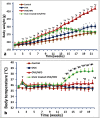
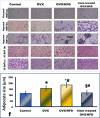
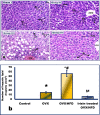

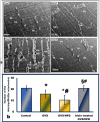
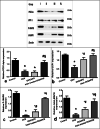
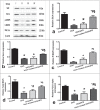
References
-
- Bonfante ILP, Chacon-Mikahil MPT, Brunelli DT, Gáspari AF, Duft RG, Oliveira AG, Araujo TG, Saad MJA, Cavaglieri CR. Obese with higher FNDC5/irisin levels have a better metabolic profile, lower lipopolysaccharide levels and type 2 diabetes risk. Arch Endocrinol Metab. 2017;61:524–533. doi: 10.1590/2359-3997000000305. - DOI - PMC - PubMed
MeSH terms
Substances
LinkOut - more resources
Full Text Sources
Medical
Research Materials
Miscellaneous

